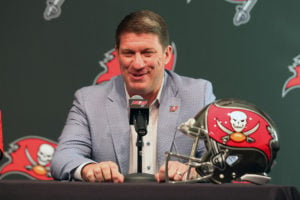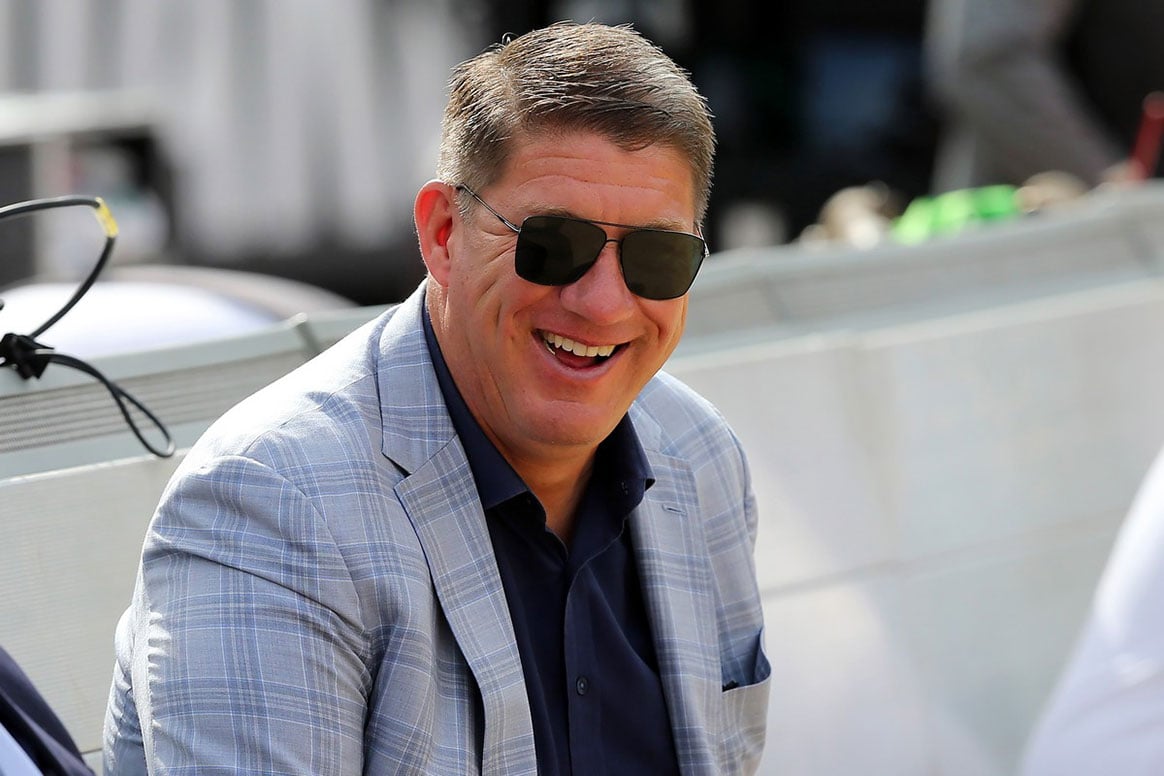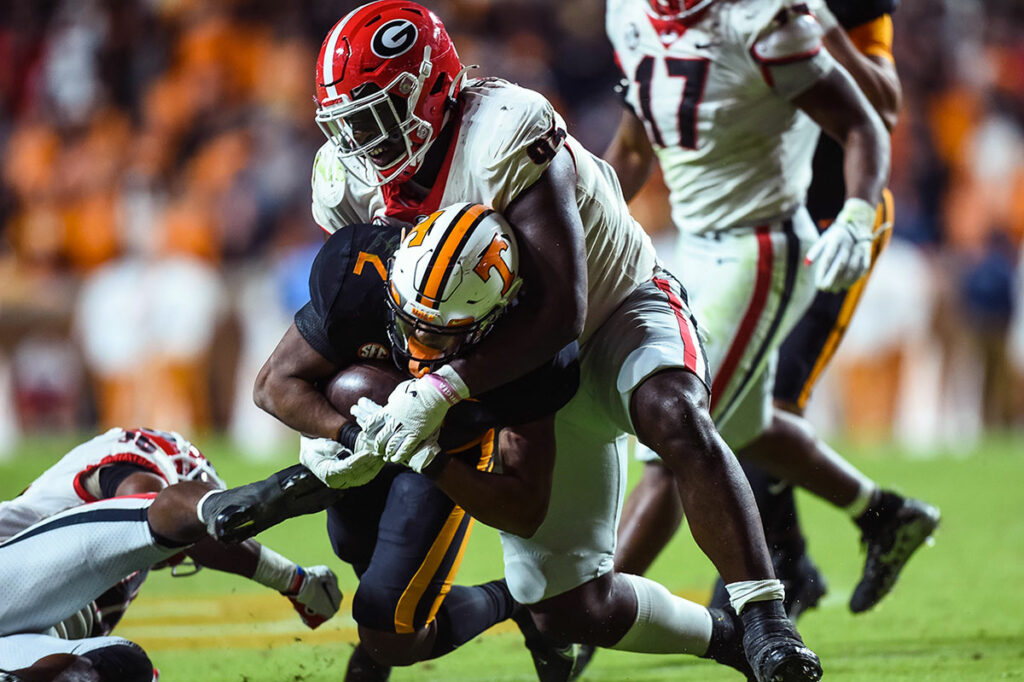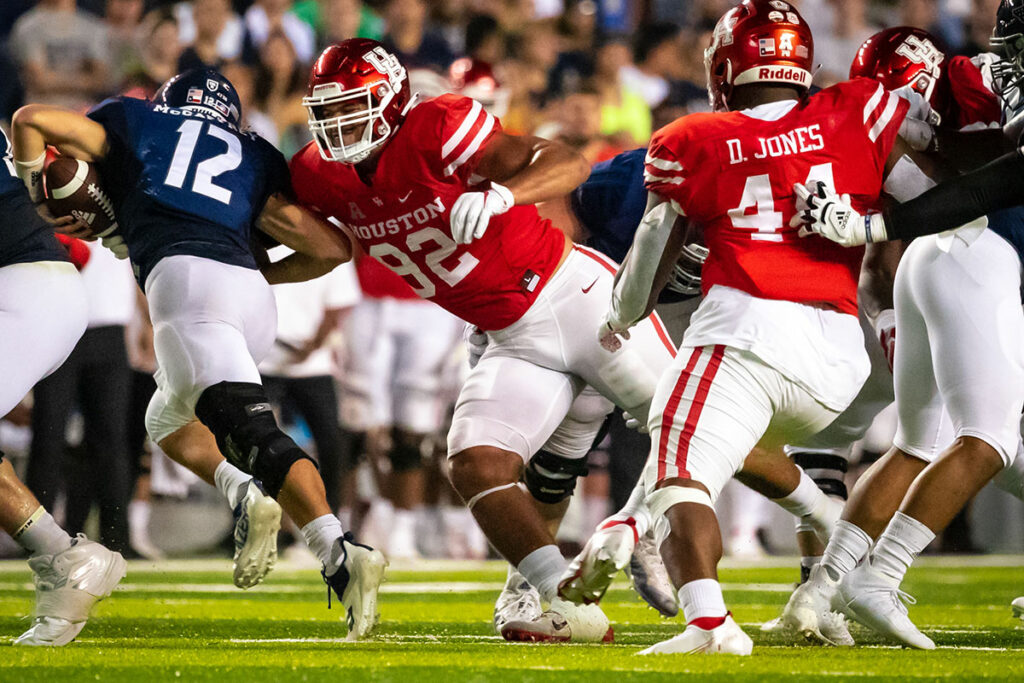The Bucs trading away the 27th overall pick in the 2022 NFL Draft to Jacksonville for picks No. 33, No. 106, No. 180. Why would general manager Jason Licht make this trade? As Scott Reynolds said on the Pewter Report Live Draft Show, the reason is because the Bucs had several players they liked who would still be available at their next pick. But beyond that, after seeing what Tampa Bay was able to get back in the trade it’s also because the team received excellent value in the trade.
Value Explained
NFL teams don’t make draft pick trades based off gut feel. Each team uses a chart with a specific value assigned to every pick. This is how they can weave such intricate trades in minutes where both sides come away feeling good about what they received for what they gave up. However, not every team uses the same chart. This is where a savvy G.M. can find surplus value. And if we have learned anything about Licht in his almost 10 years in Tampa Bay, it’s that he is a savvy GM.
Two Of The Most Popular Draft Charts
The first trade value chart to become popularized in the NFL was the “Jimmy Johnson Pick Value Chart.” Johnson popularized the chart when he was the head coach of the Dallas Cowboys in the late 1980s and early 1990s. This chart is weighted heavily towards picks in the early rounds, as Johnson believed there were a very limited number of good players in a given draft and they were typically only available early. This chart is still very popular today.

Bucs GM Jason Licht – Photo by: Cliff Welch/PR
The Johnson chart isn’t the only chart out in the public domain though. Comparatively, there have been many advances in analyzing the value of draft picks over the last 30-35 years. Brad Spielberger of Pro Football Focus and Jason Fitzgerald of OverTheCap.com endeavored to find a more efficient model in their book “The Drafting Stage.”
The model they created was much more analytically based, as they used contract data and performance of draft picks to better understand the expected value of each pick in the draft. Subsequently, they were able to assign their own values to each pick, coming up with a different model than the original Johnson chart. Overall, they discovered that NFL teams really aren’t great at picking which players are going to be the best in a given draft class. And therefore the more picks a team can accumulate the better their chances are of coming away with good players. I call it the shotgun approach. Since its development, this model has proven to be a more accurate reflection of value in the NFL Draft.
What Does Each Model Say About The Bucs’ Trade?
Teams throughout the NFL use different models to assign value. Some still use the Johnson chart. Some may use the Spielberger/Fitzgerald model. Many teams most likely use their own proprietary system. From this trade we can infer two things.
A) The Jaguars most likely still use the Johnson chart.
B) The Bucs use a chart more in-line with the Spielberger/Fitgerald model. How can we tell? Here is the breakdown of the trade using each method.
Johnson Model
Bucs give up:
No. 27 (680 points)
Jaguars give up:
No. 33 (580 points)
No. 106 (82 points)
No. 180 (17.8 points)
Therefore, using this method, the Bucs receive 679.8 points worth of value, while giving up 680 points. Basically, this is an even trade. The Jaguars they like it because they give up no surplus value and get to move up to get a player they are obviously very high on in linebacker Devin Lloyd.
Spielberger-Fitzgerald Model
Bucs give up:
No. 27 (1330 points)
Jaguars give up:
No. 33 (1228 points)
No. 106 (637 points)
No. 180 (368 points)
As a result of this method, the Bucs receive 2,223 points worth of value, while giving up only 1330 points. The difference in value is 903 points – in Tampa Bay’s favor. The 903 points is approximately the same value as the 63rd overall pick, according to the Spielberger-Fitzgerald chart. Essentially, the Bucs were able to pick up the equivalent of an additional late second-round pick’s worth of value.
This is a quite an amazing haul for Licht and the Bucs. As Pewter Report’s Jon Ledyard said moments after Tampa Bay traded with Jacksonville, “The Jags just got hosed!”
Bucs Have 8 Total Picks On Day 2 And Day 3
This trade follows a sound process to give Tampa Bay more opportunity to add talent to it’s roster on Day 2 and Day 3. Here is a breakdown of all eight draft picks the Bucs have entering Day 2.
Second Round
No. 33 (from Jacksonville)
No. 60
Third Round
No. 91
Fourth Round
No. 106 (from Jacksonville)
No. 133
Sixth Round
No. 180 (from Jacksonville)
Seventh Round
No. 249
No. 262 (compensatory pick)




